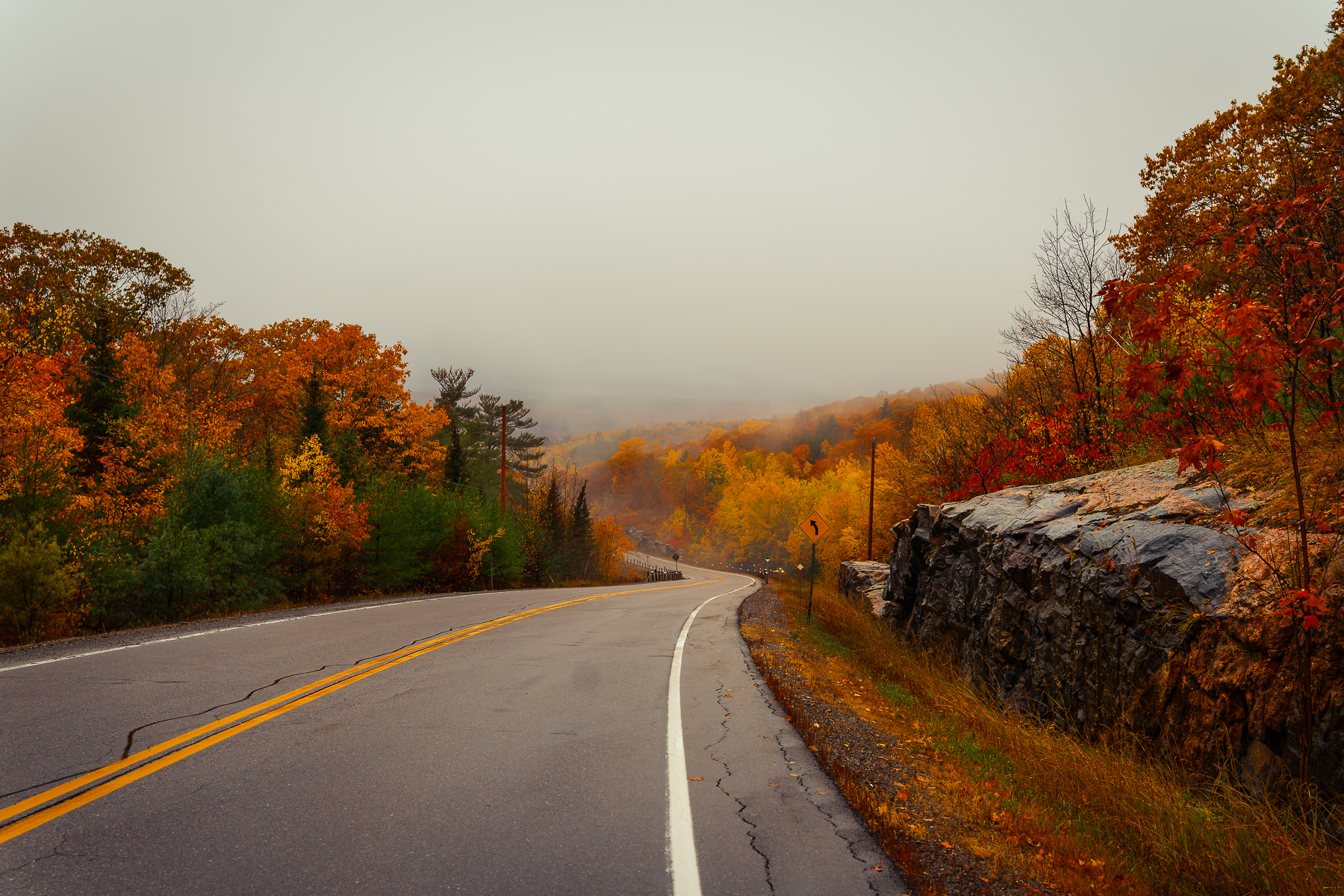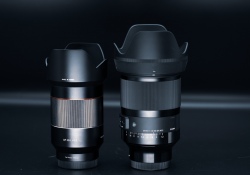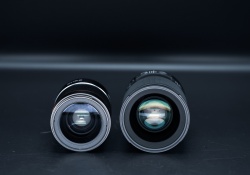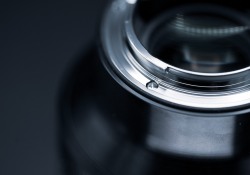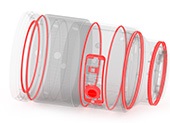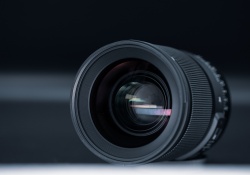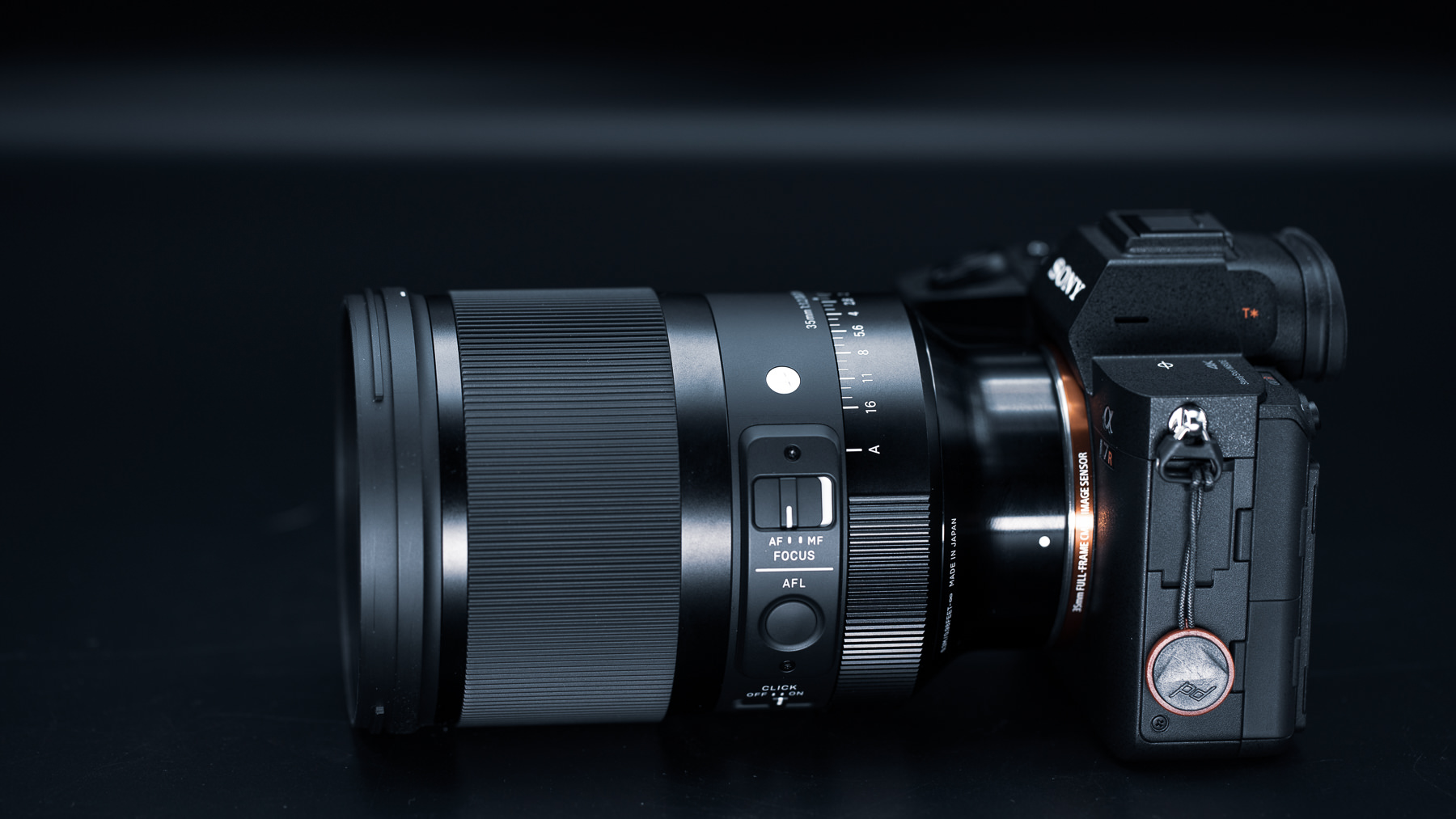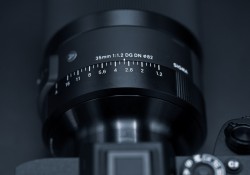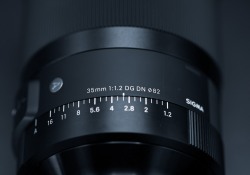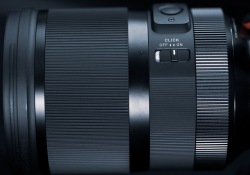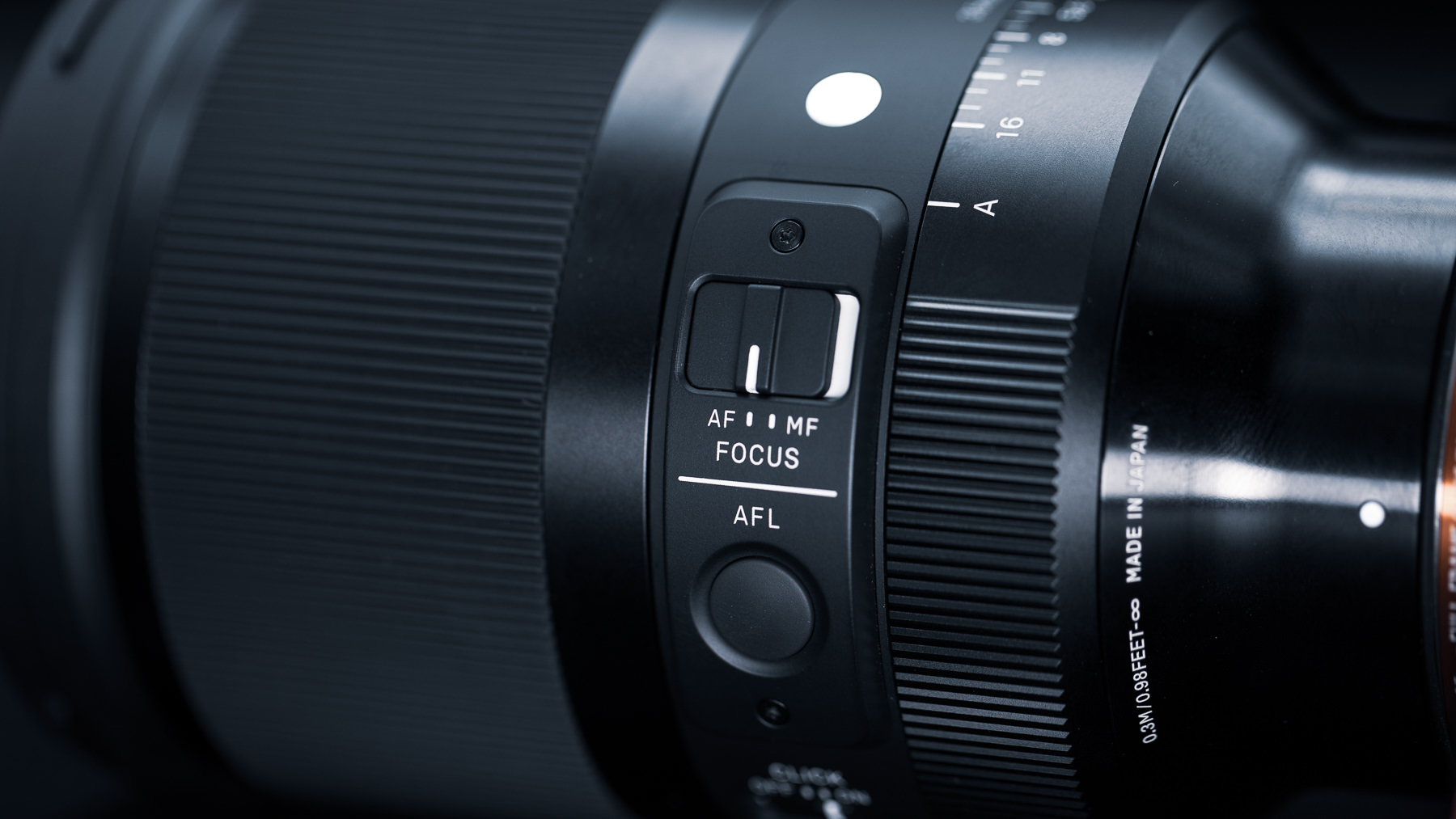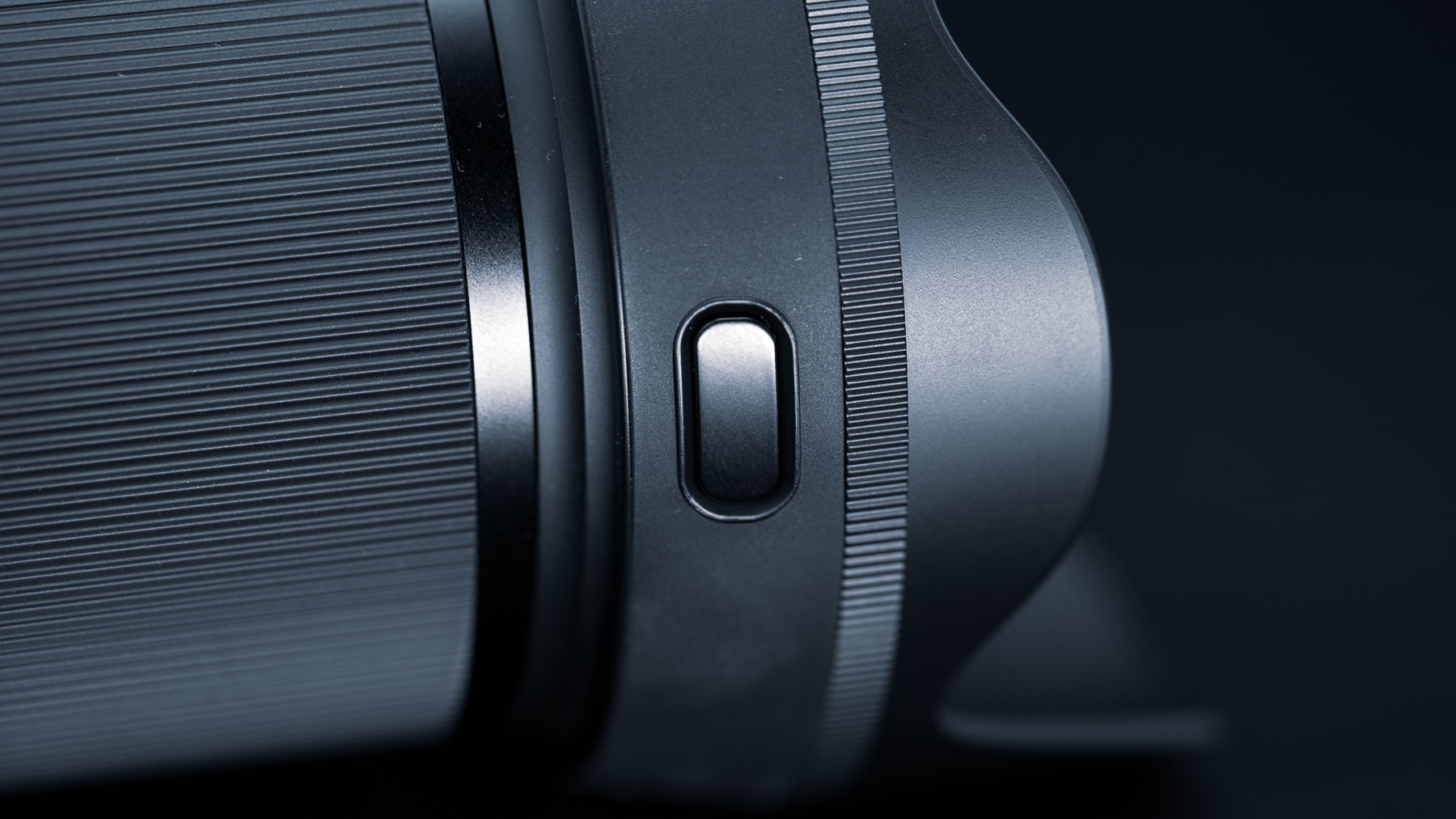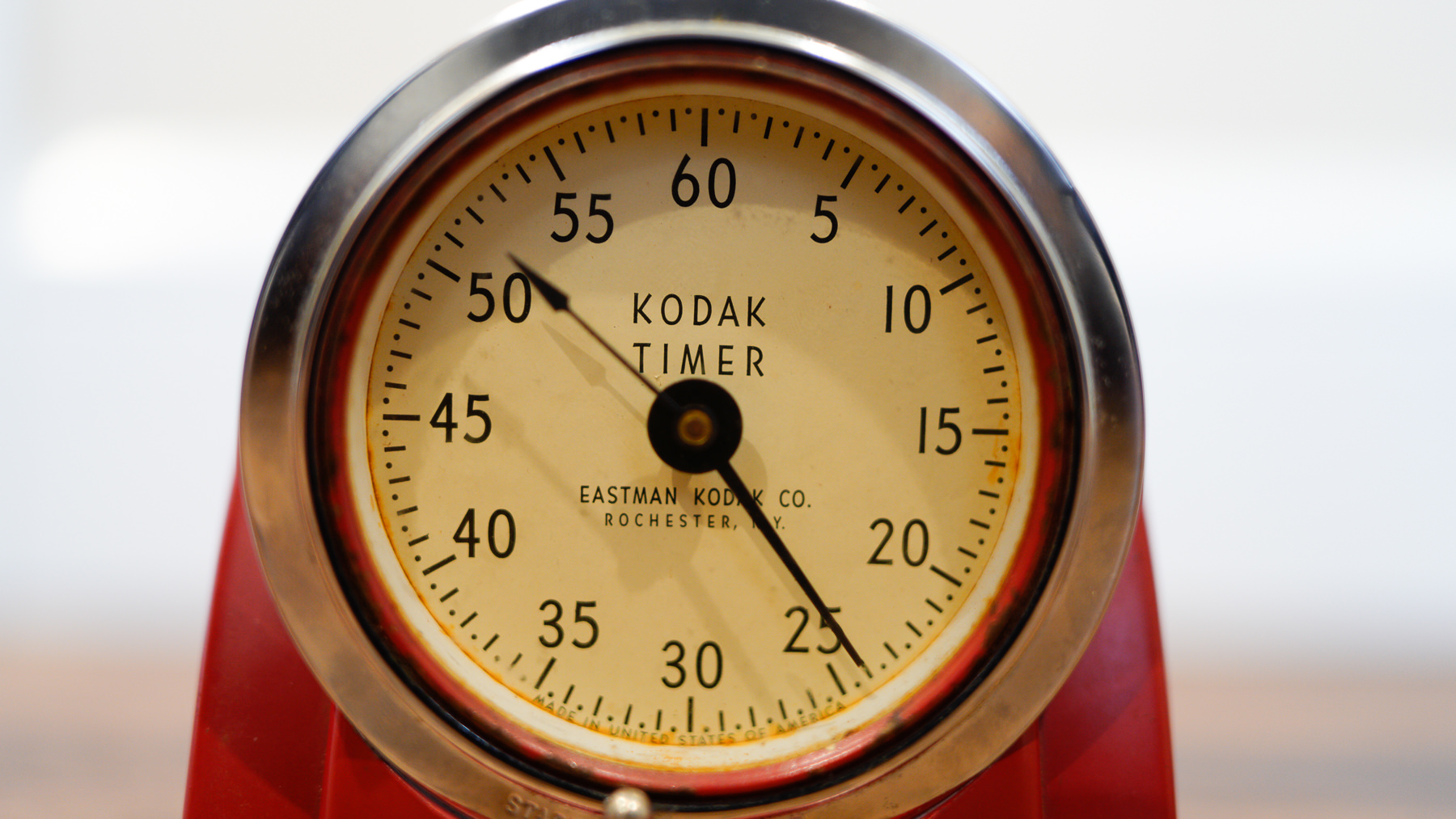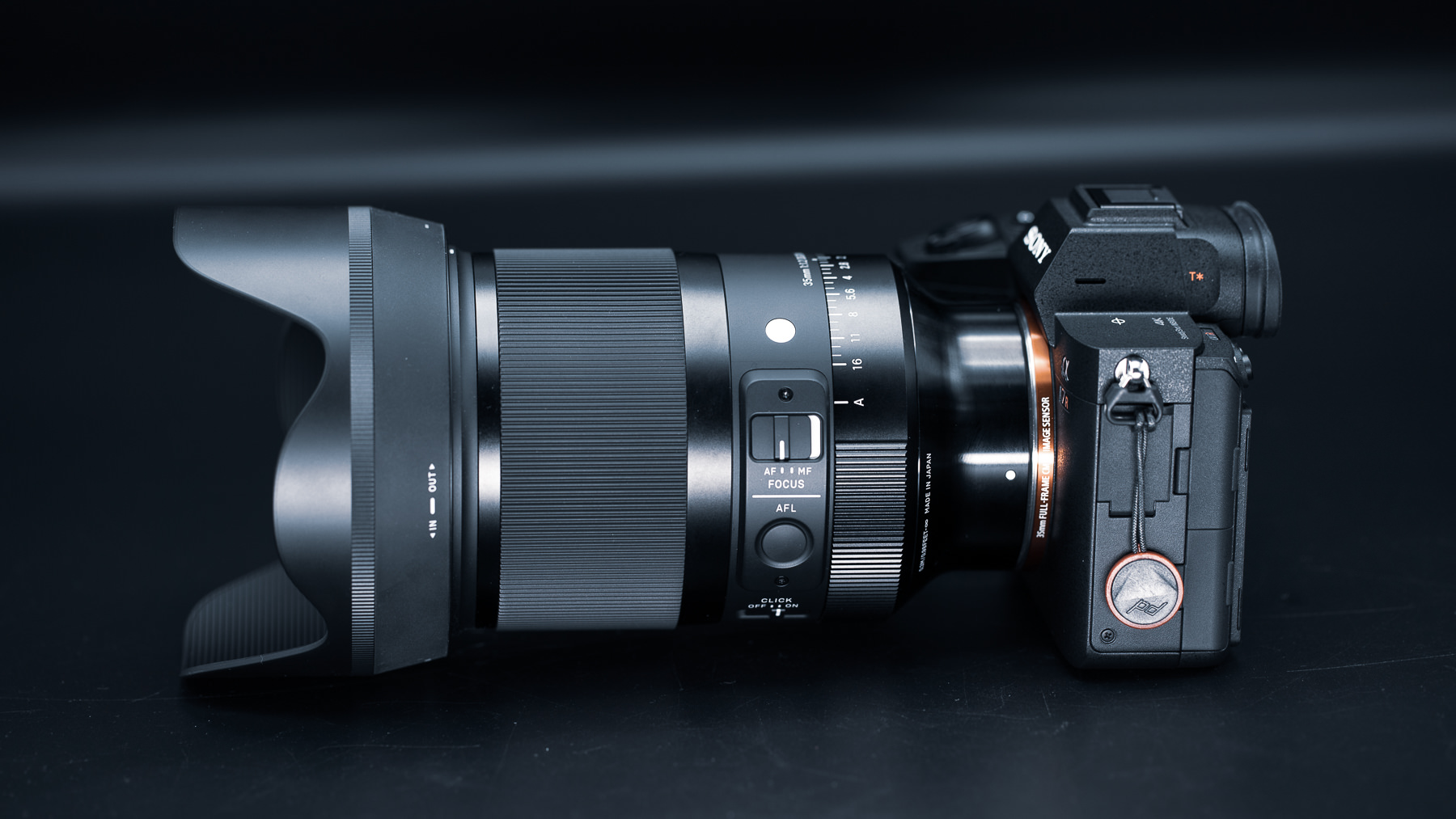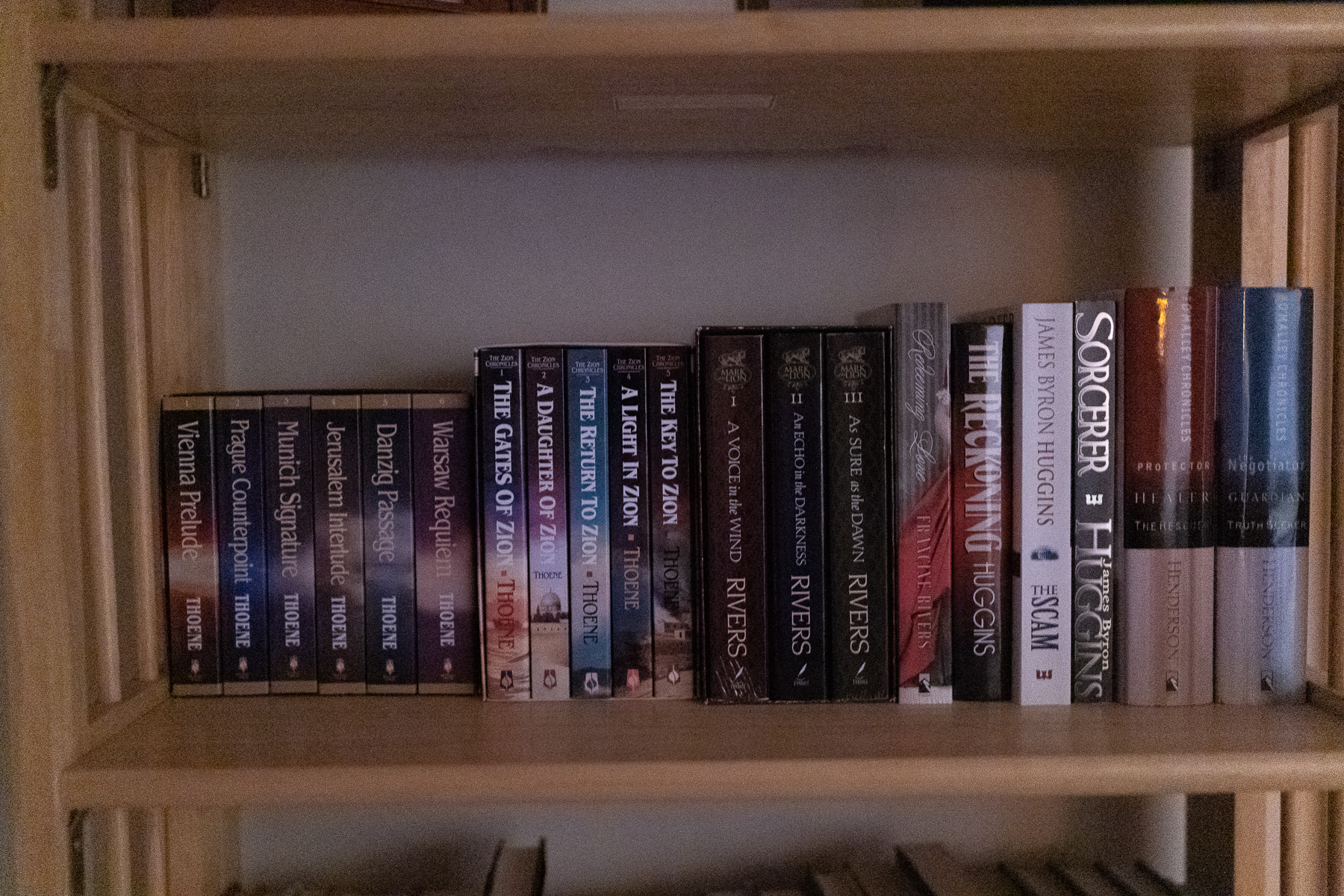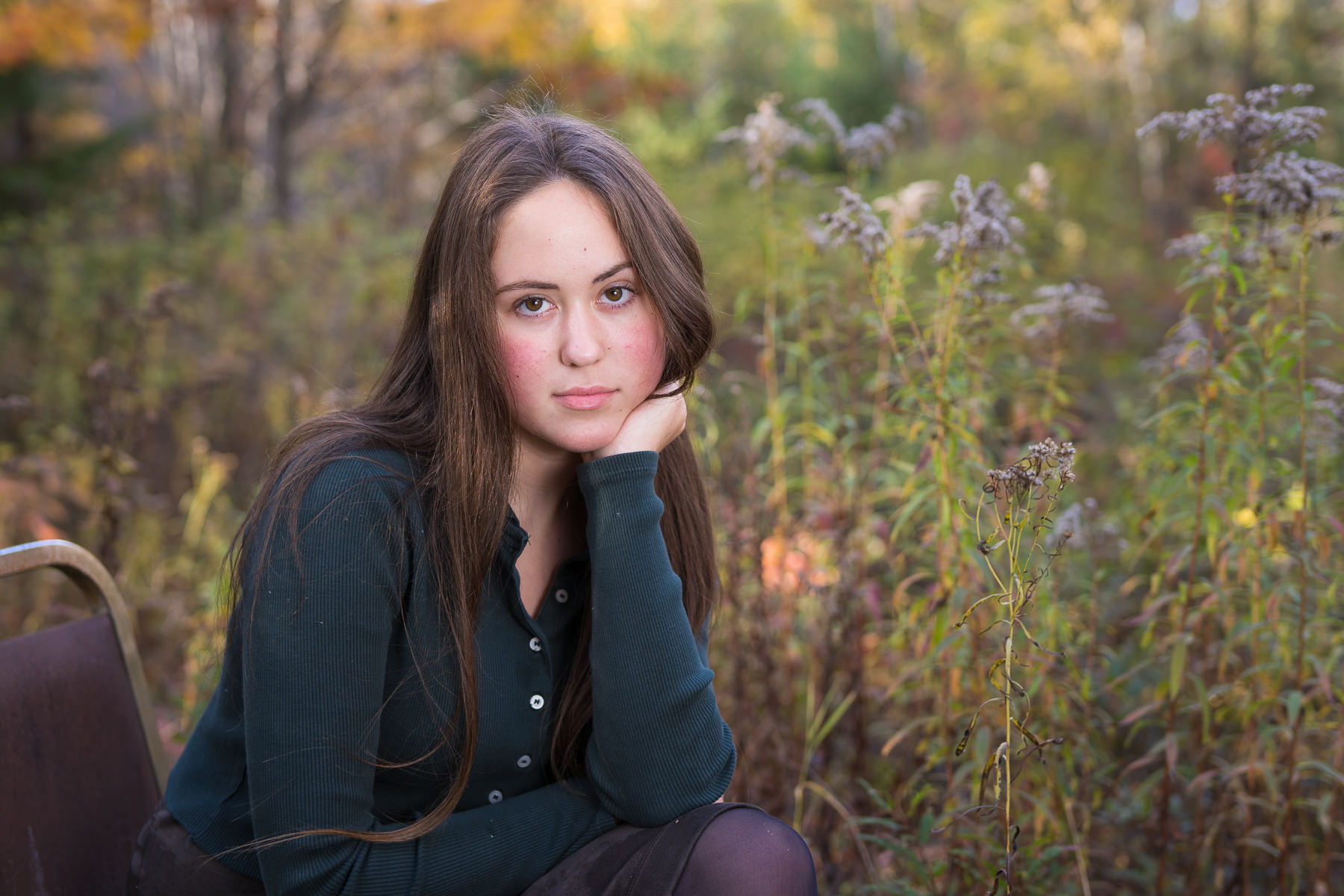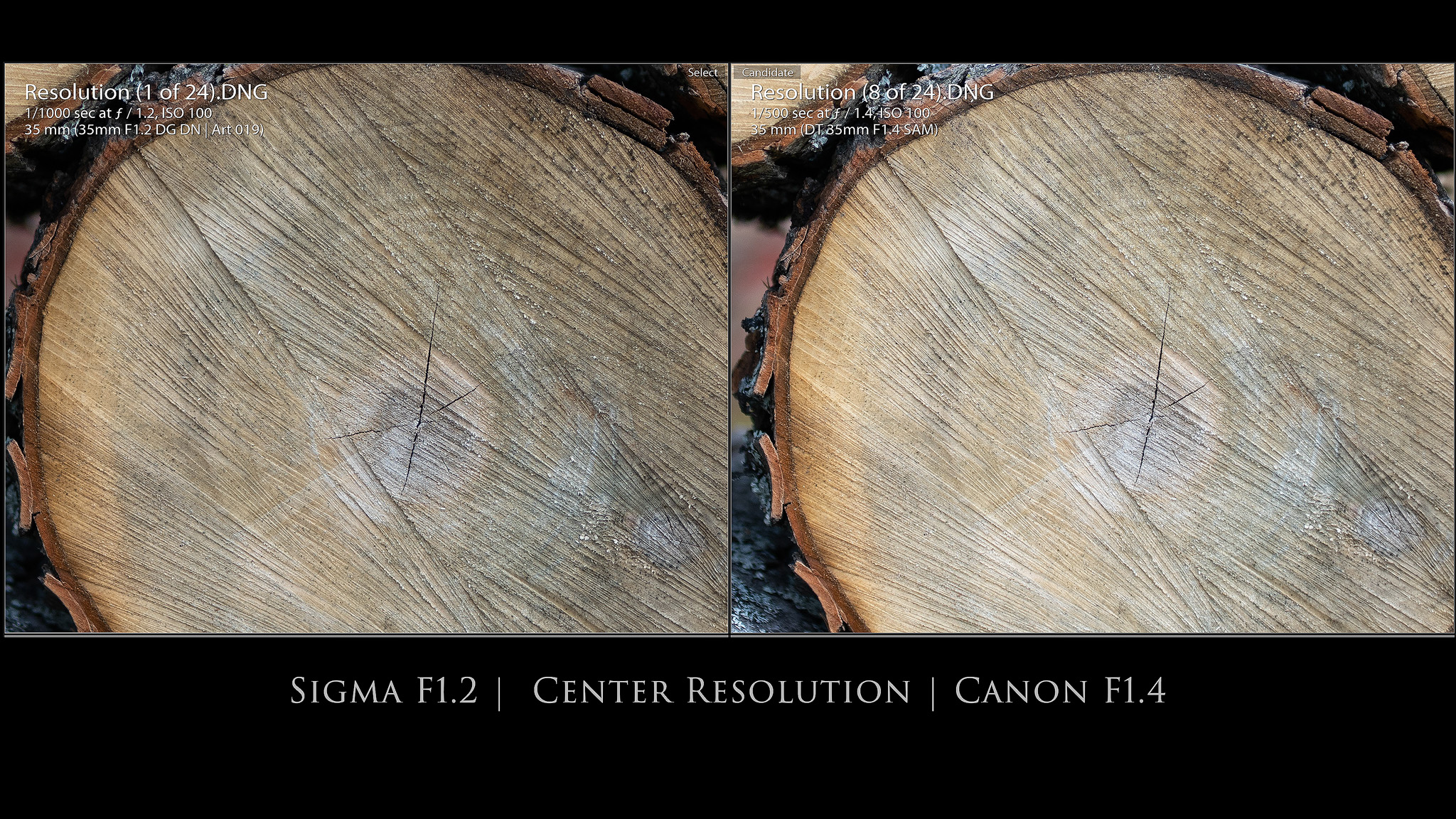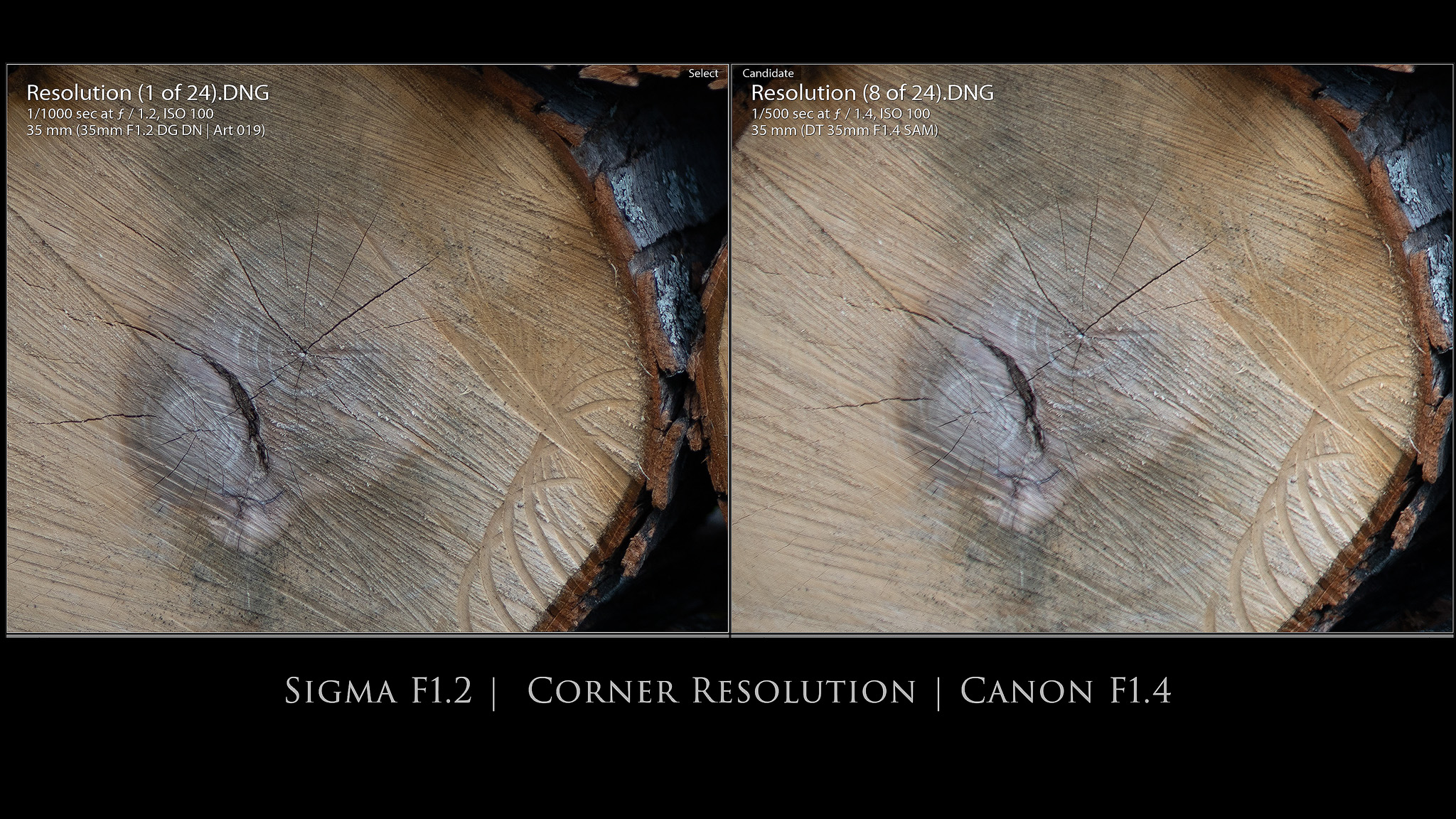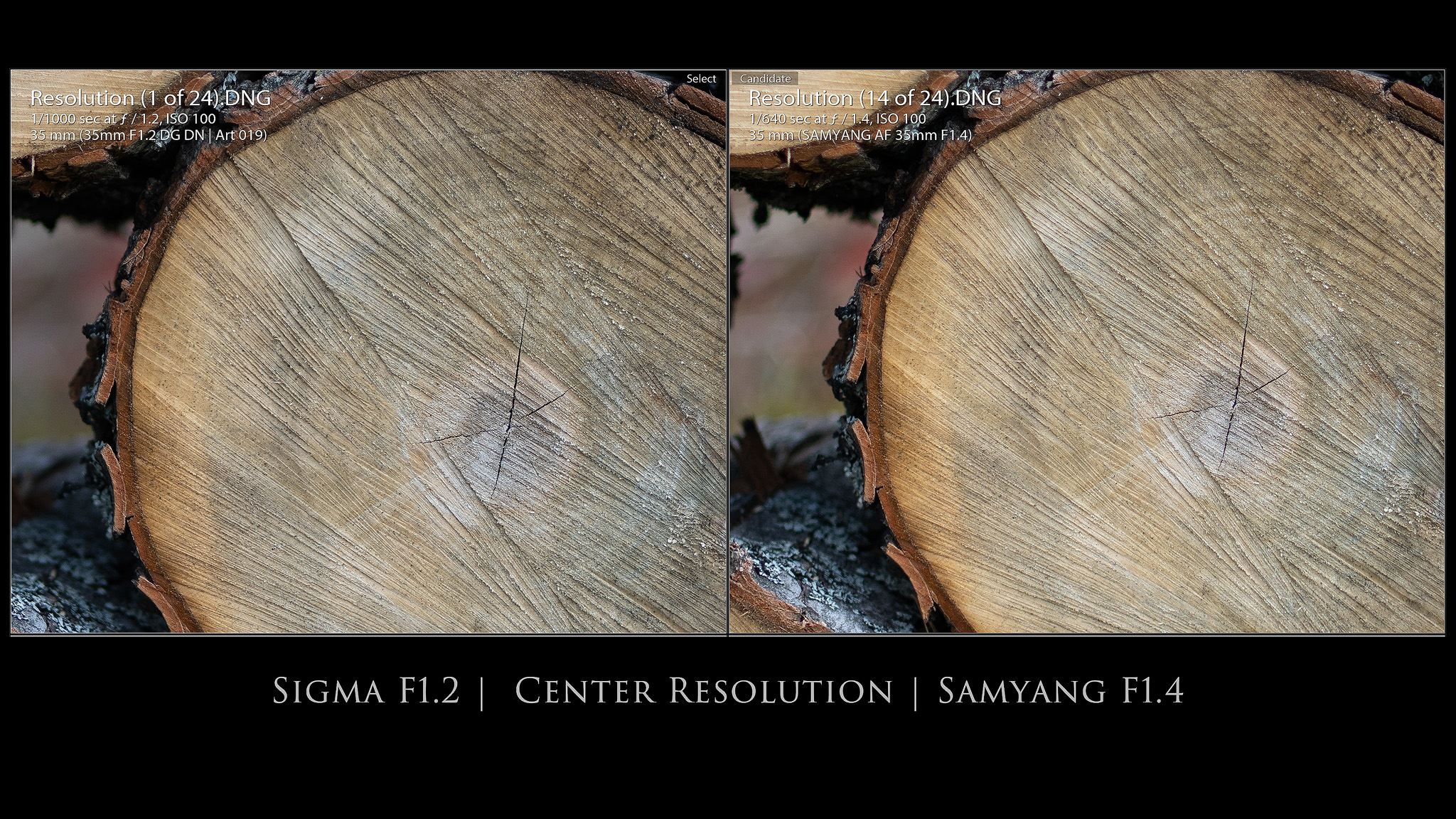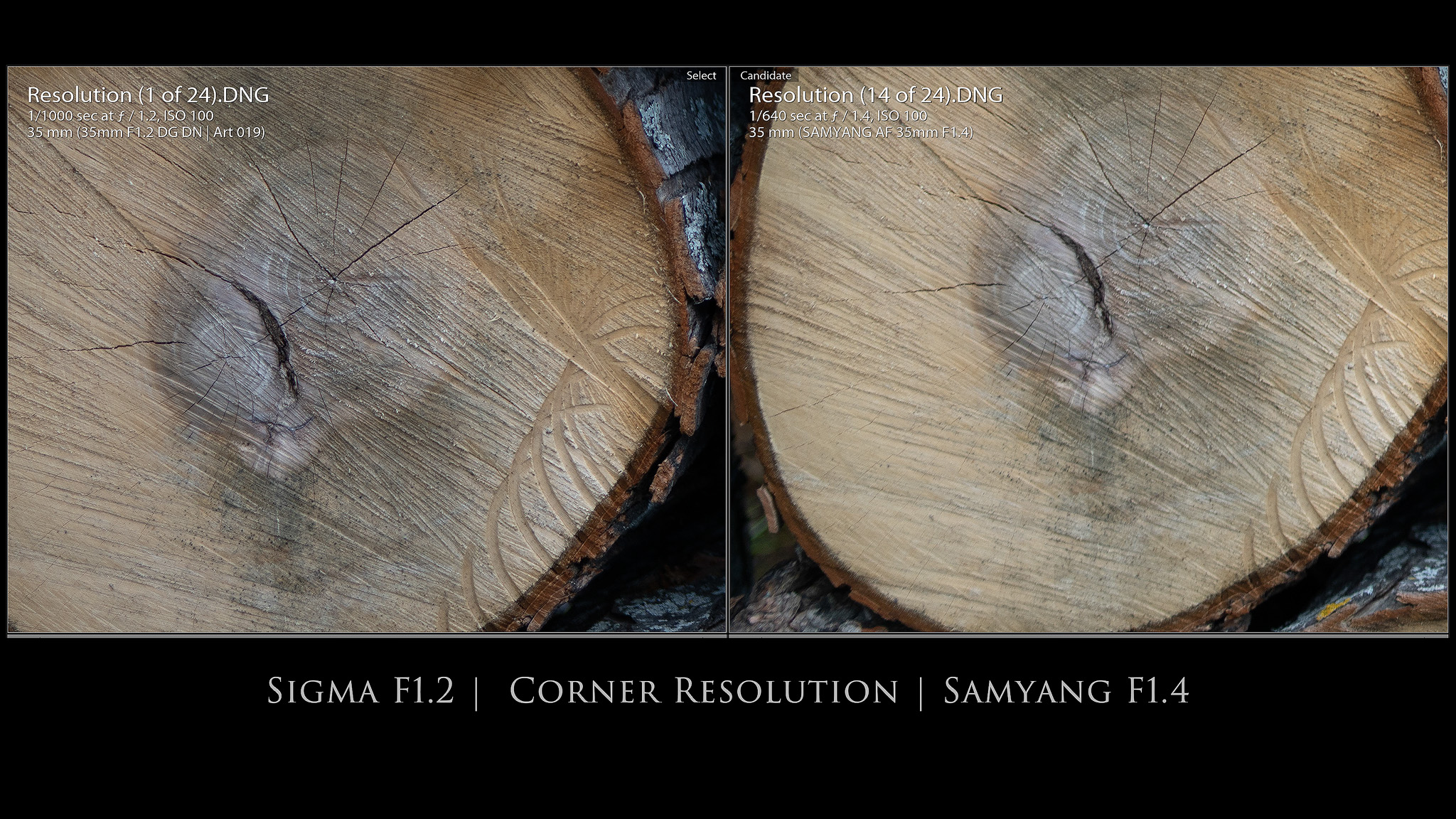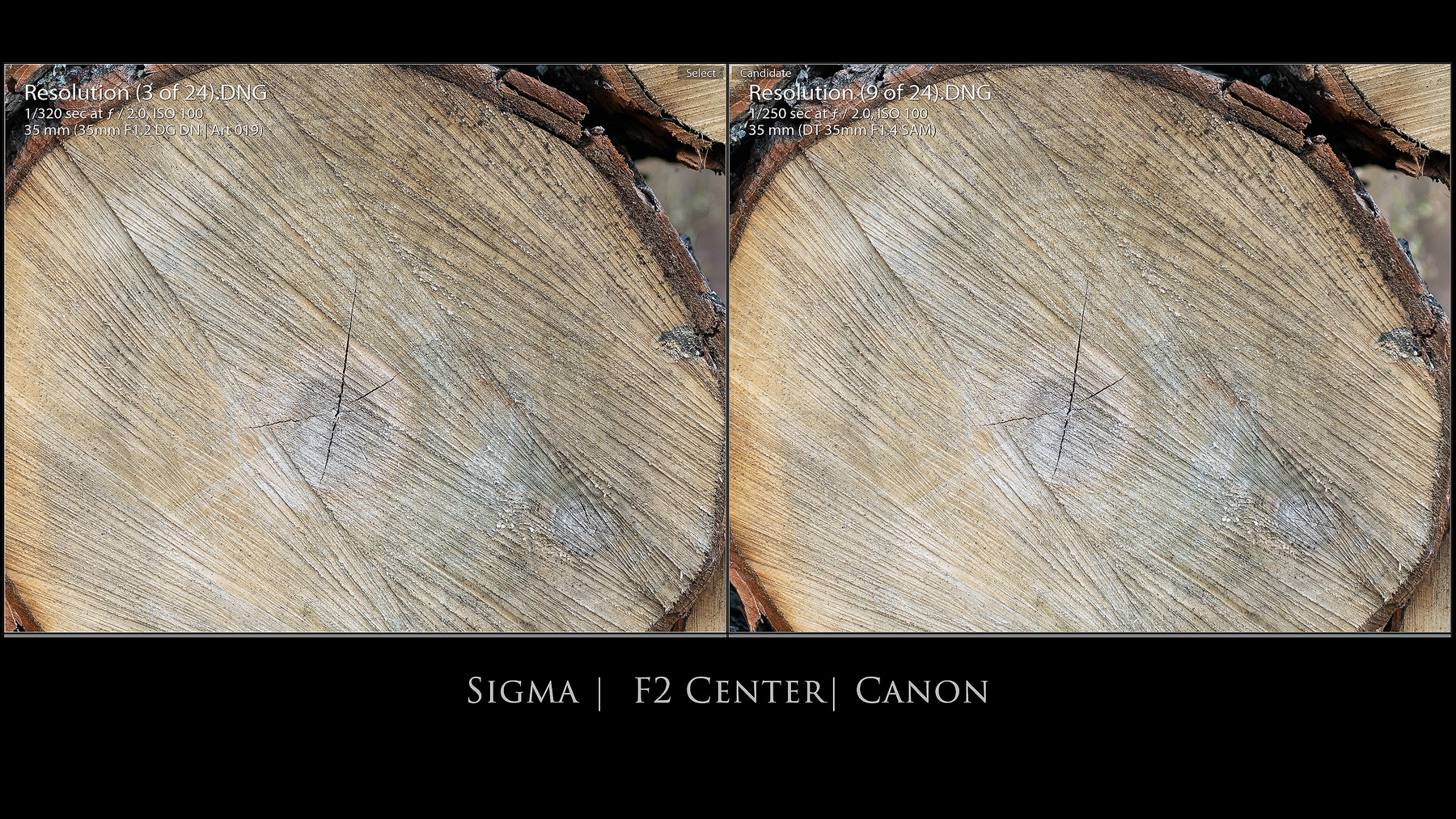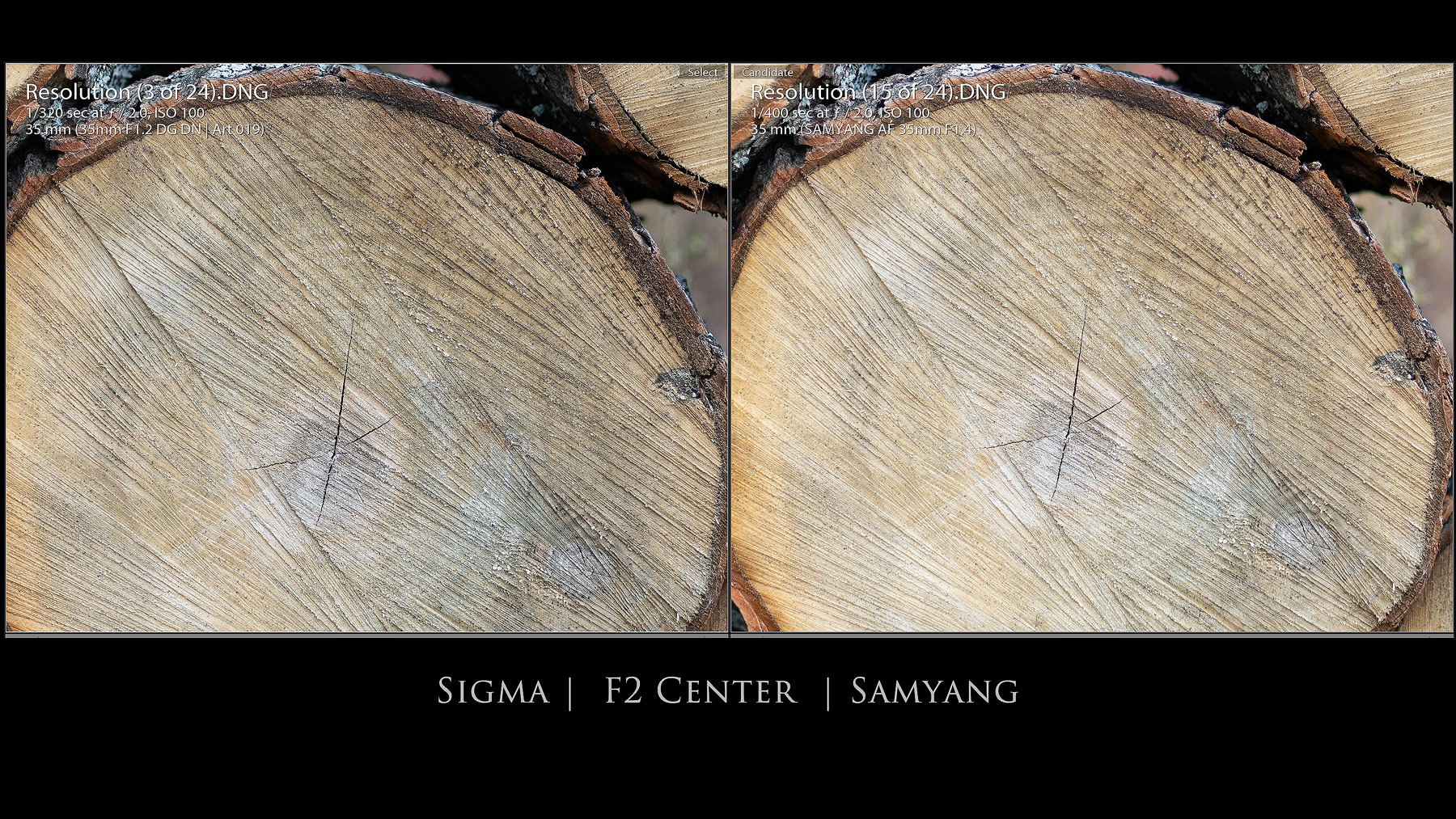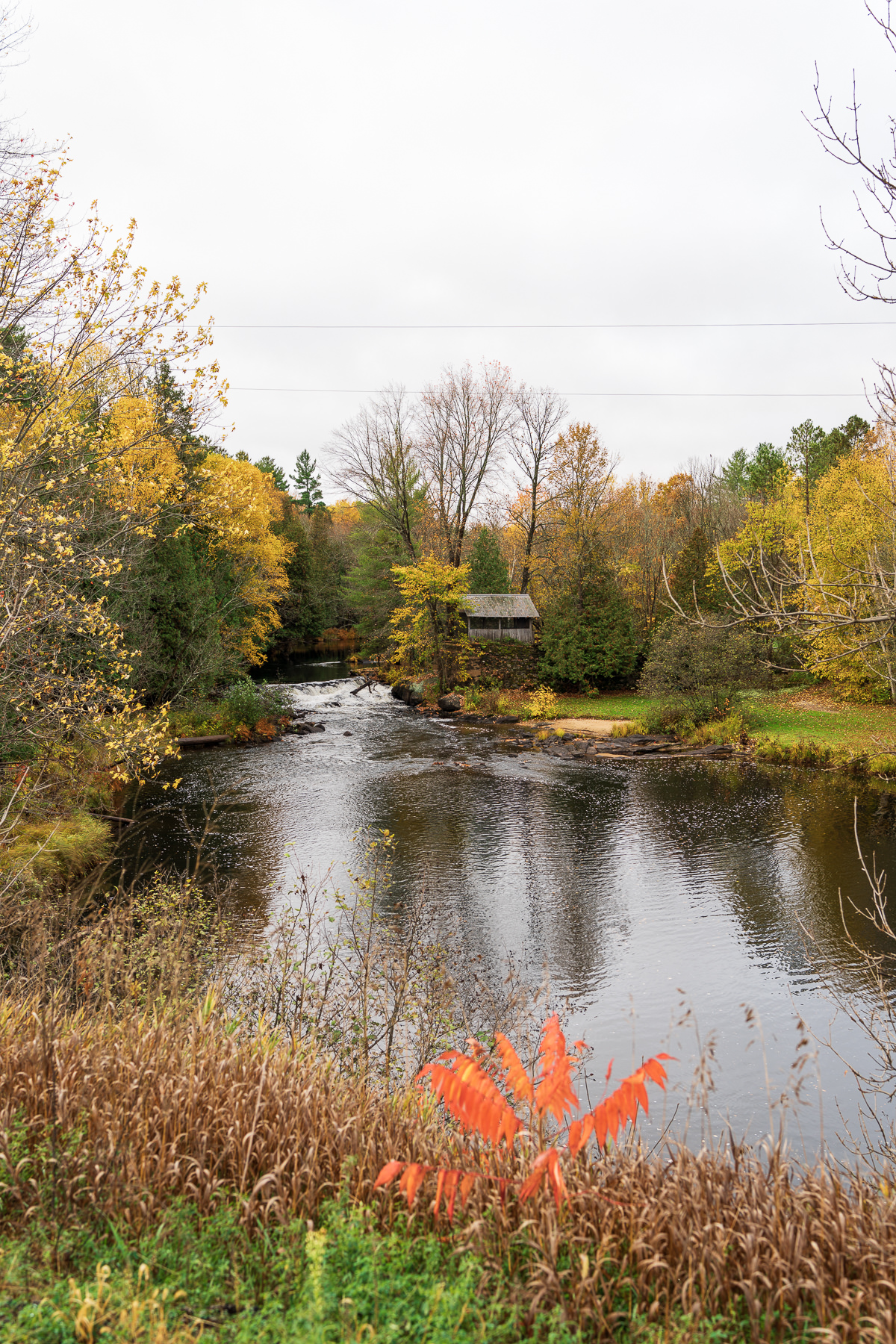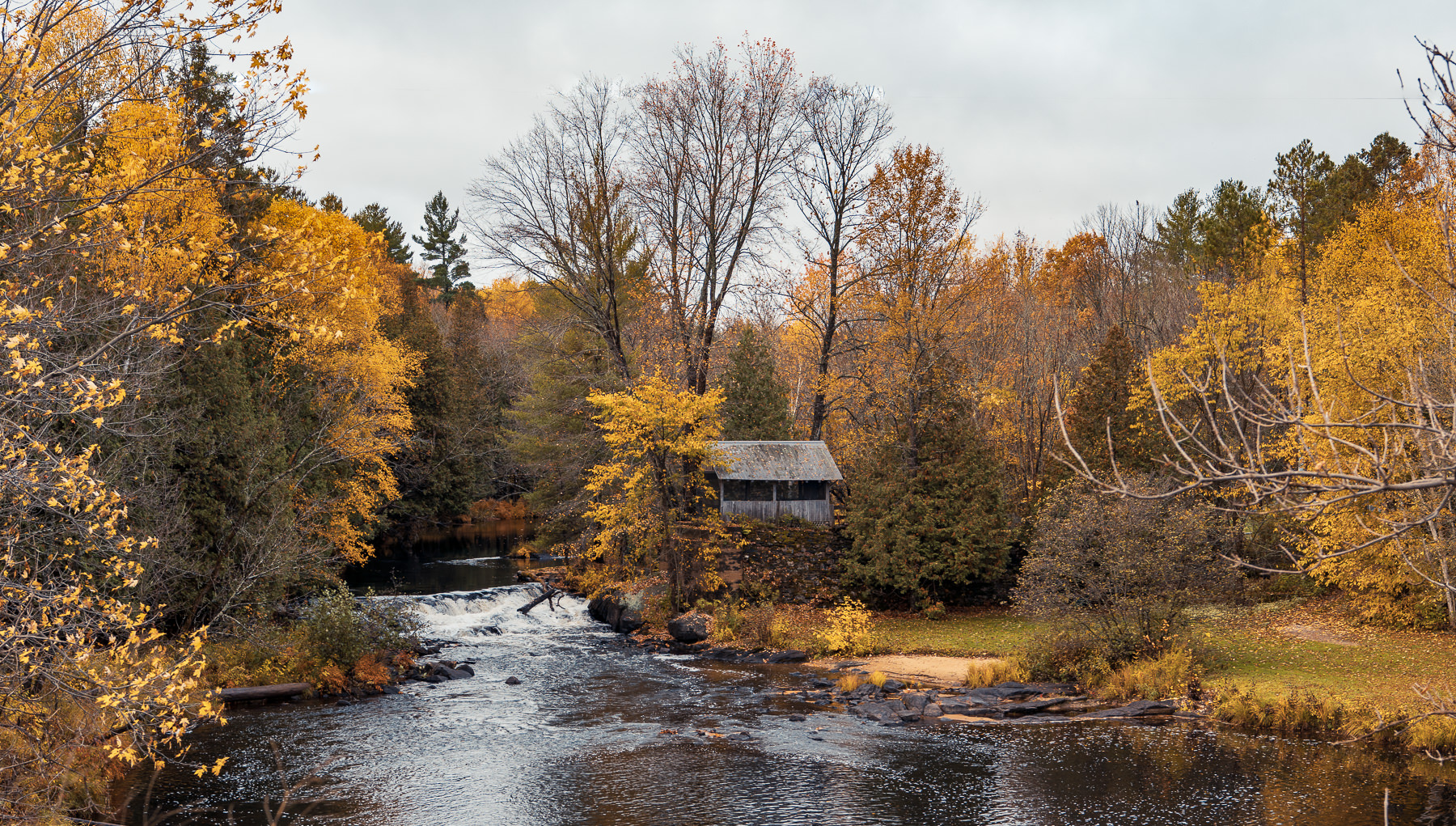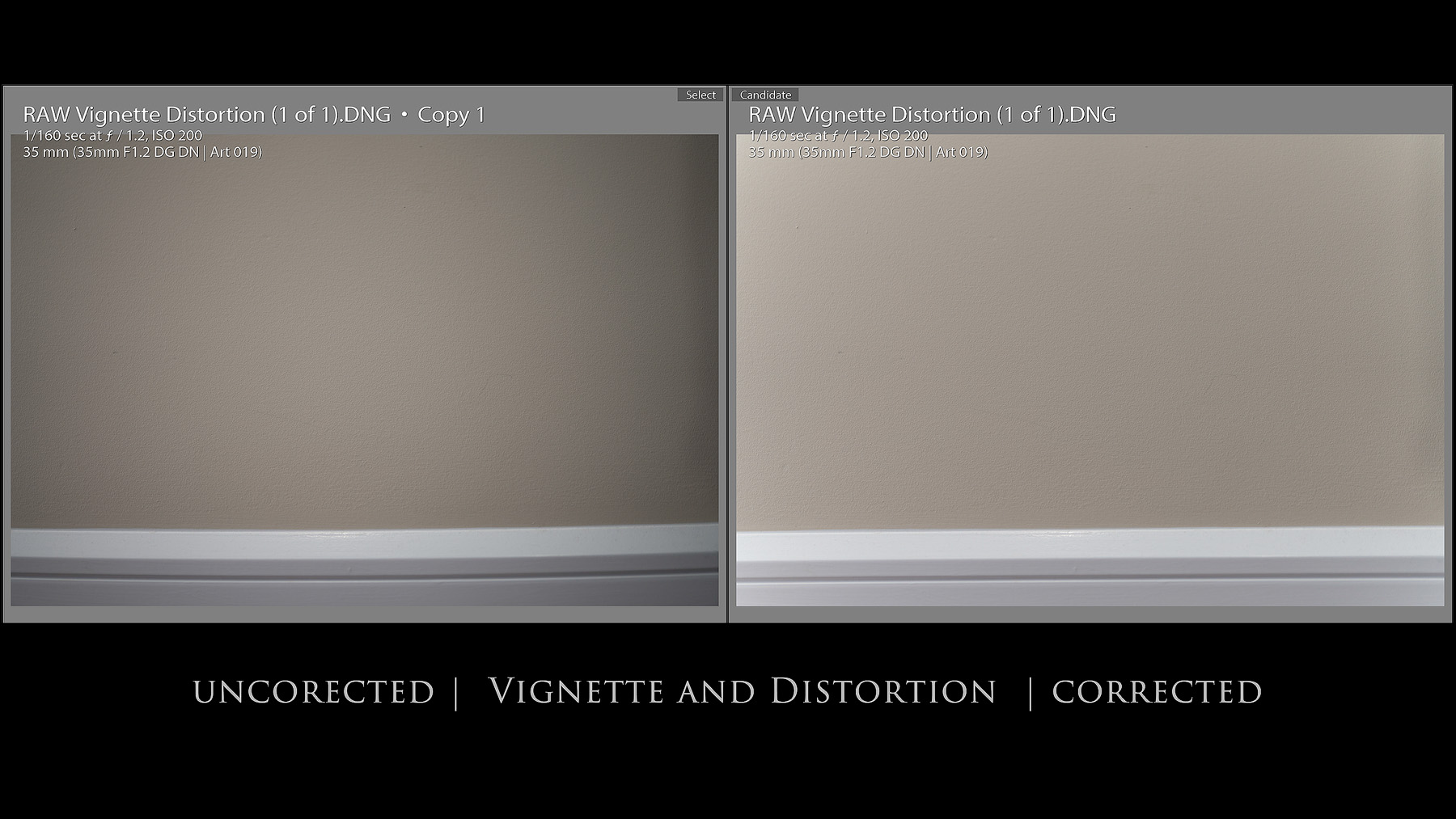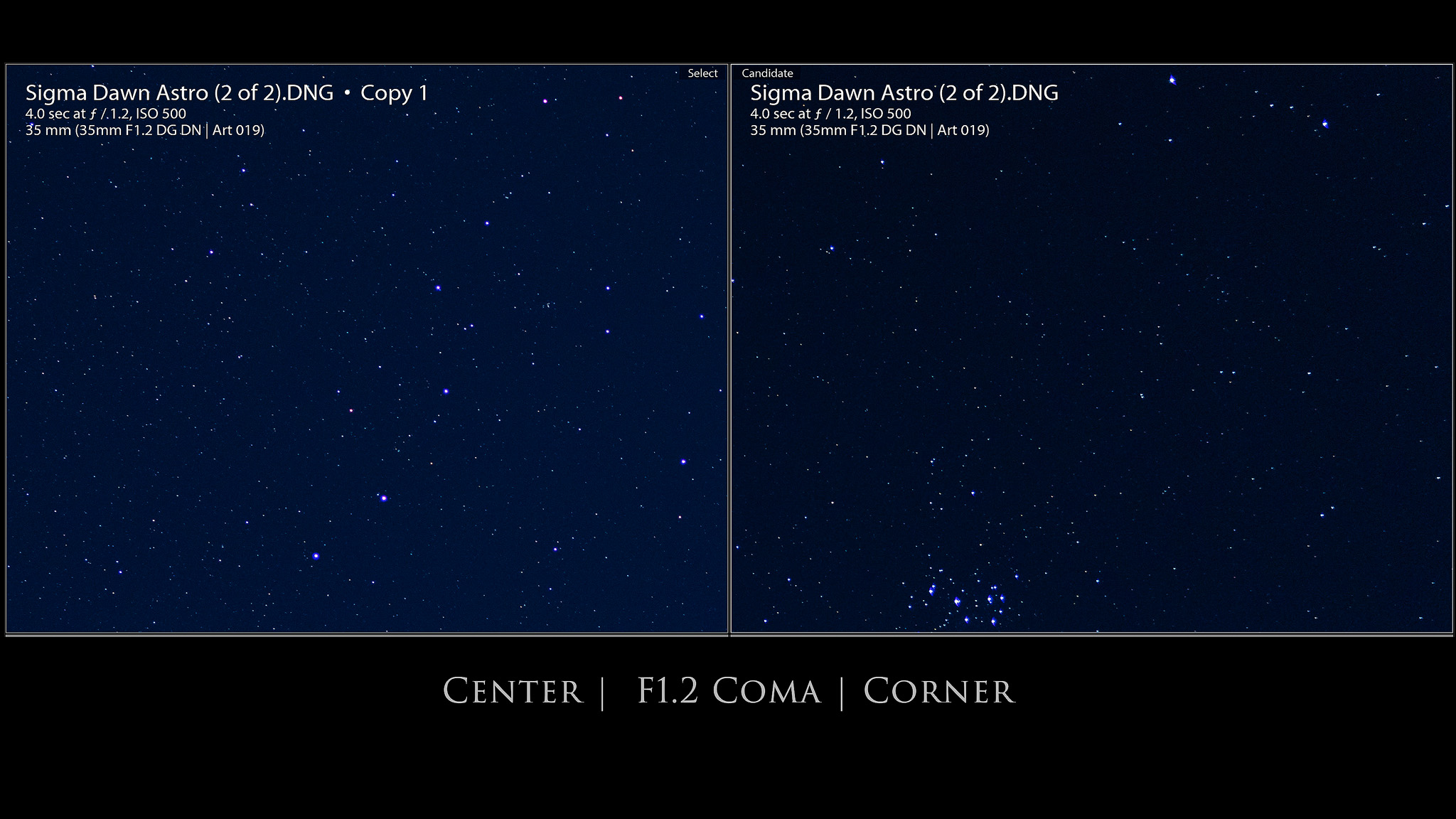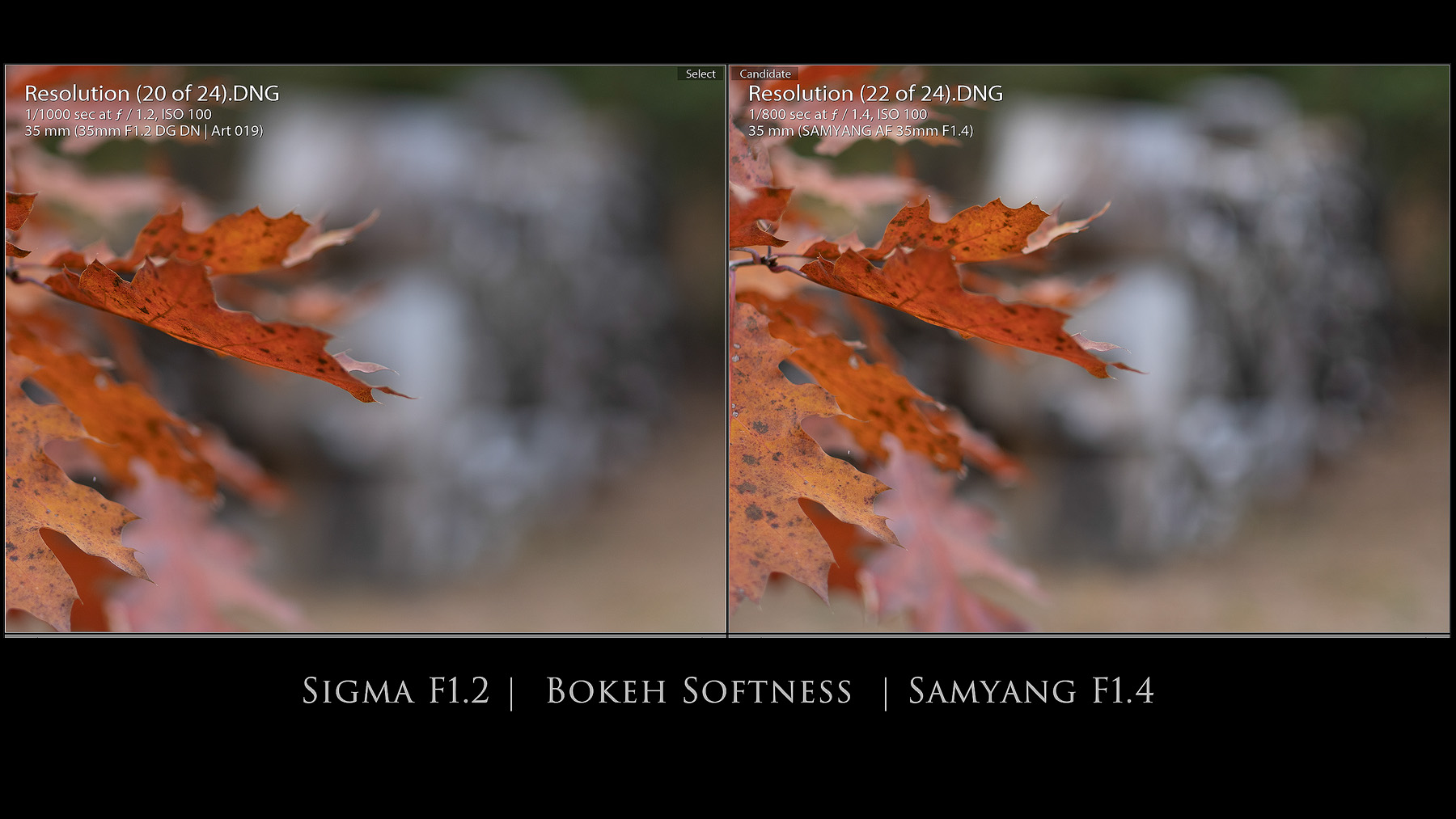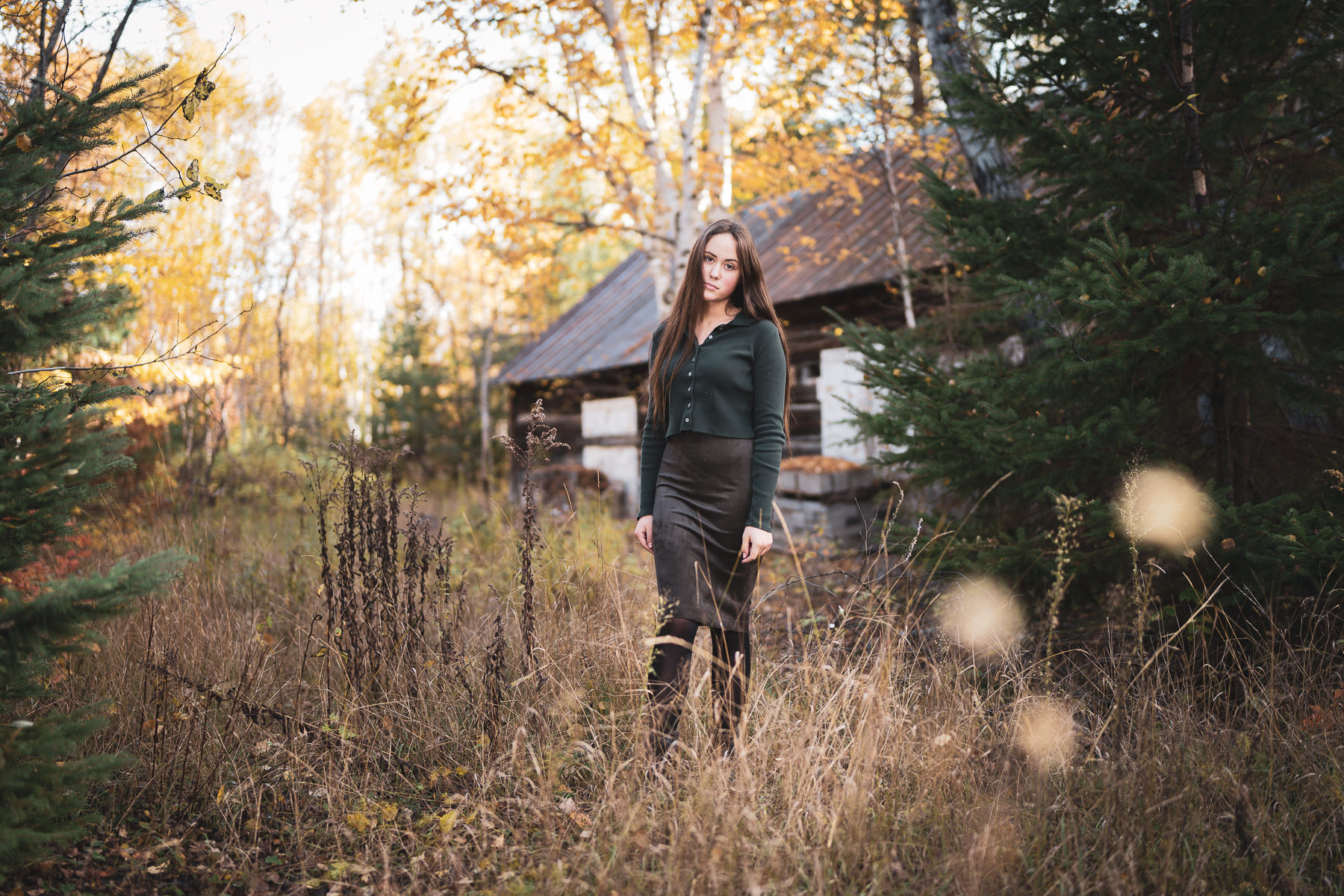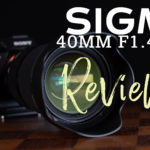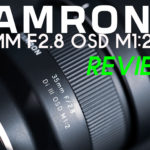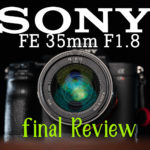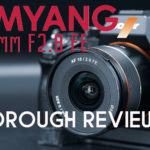Sigma was a little slow to adopt to the Sony FE platform despite embracing APS-C e-Mount years ago. 2018 brought retooled versions of a number of their ART series DSLR lenses, though those lenses had clear compromises in size and performance based on their not having been originally developed for Sony. In 2019, however, all of that changes, and Sigma is rolling out multiple dedicated, freshly designed lenses for Sony FE. The first I reviewed was the little 45mm prime lens. The second of these was thenew Sigma 14-24mm F2.8 DG DN ART wide angle angle zoom, which I reviewed here. The final member of the trio is the beast – a massive optical juggernaut – the Sigma 35mm F1.2 DG DN ART lens. It is the first autofocusing 35mm F1.2 lens (and perhaps the first F1.2 AF lens, period) on the Sony platform, and it will be special interest to event shooters or portrait photographers who want the ultimate in flexibility at the focal length. The 35DN (as I’ll call it for short) is not what one would call a “balanced lens”; it is heavily skewed towards the “image quality at all costs” end of the spectrum in a very Sigma kind of way. It is large. It is heavy. It is quite expensive. And it is optically exceptional.
In fact, it is just bonkers how sharp it is at F1.2. Take a look at this real world shot at F1.2:
I’ve reviewed it not only on my Sony a7RIII and Sony a9 bodies, but also on the new 61MP Sony a7R IV that I just reviewed here. The 35DN has no problem matching the super high resolution of the a7RIV and produced beautifully detailed images on that platform.
I suspect that few will complain about the image quality from the Sigma 35DN (with one exception that we’ll see), but it also isn’t a lens for everyone. It is the largest 35mm lens that I’ve ever tested, and outside of the Zeiss Milvus 35mm F1.4 and its all-metal body, it is the heaviest, too. So let’s discover together who this lens is actually for, and if the all-round performance is worthy of your consideration.
If you prefer to watch your reviews, you can see my full video review here (complete with many video and image samples):
Follow Me @ Patreon | My Newsletter | Instagram | Facebook | Twitter | Flickr | 500px
Sigma 35DN Build and Handling
The 35DN is a beautifully-made, feature-rich lens, but it is also substantially large and heavy. The best way to get the details of the build, design, and features of the 35DN is to watch this video episode:
You can see from this comparison chart that the Sigma is easily the largest and heaviest lens in the bunch of the wide aperture 35mm options for Sony. It is nearly an inch longer (over 15mm) than the closet competitor, and is very nearly twice as heavy as the competitors at 1090g (2.4lbs). That’s a full pound heavier than the Sony/Zeiss Distagon or the Samyang AF 35mm F1.4. I had the Samyang on hand, and you can see that the Sigma pretty much dwarfs it. Even the filter size is 82mm vs 67mm.
I’m not going to harp on the size issue, as Sigma is delivering something unique here with a highly corrected F1.2 lens. At the same time you need to know that this is a lens that you are going to have to be intentional about using; it’s far too large to be casually tossed into your bag if you have no intention of using it.
The build quality is excellent here, with a gasket at the rear mount, weather seals throughout the body, and a special coating on the front element to resist moisture and oils.
The focus ring is very wide, and fairly heavily damped for a “focus-by-wire” lens (input from the focus ring is routed through the lens’ focus motor to actually move the elements). The heavy damping/weight is a positive, however, as it allows for nice precision when manually focusing.
The 35DN is a very feature-rich lens very like the very expensive Sony G-Master lenses. There is a manual aperture ring where one can choose auto aperture, manually select aperture (with one-third stop detents), and there is even an option to “declick” the aperture for video aperture racking or unrestricted aperture movement. I’ve only seen this range of options previously with the expensive Sony options.
Also rarely seen outside Sony lenses is the AF-L button (autofocus lock) on the side which can be programmed to a variety of functions in the camera. I’m also always found of having a dedicated AF/MF switch as it is the most precise, tactile way of selecting manual focus when desired.
The included lens hood (along with a nice, padded case) is very nicely made with rubberized transition textures and a locking mechanism.
One can use traditional screw-in filters in a large (but common) 82mm size.
The lens can focus to a standard 11.81″ (30cm) and produces an also-standard 0.19x magnification.
Nothing to complain about here other than the size. This is a beautifully made, professional-grade lens that is as nicely built as anything I’ve seen on the Sony platform.
Sigma 35DN Autofocus Performance
The Sigma 35DN has a hypersonic stepping motor that moves the large elements of the lens with speed and precision. Focus is very quiet in operation (though not as completely silent as the little 45mm F2.8 DN), and is smoother than what I’ve seen on many large aperture lenses. It’s not unusual for the larger aperture lenses to suffer a bit in the focus department (see Canon’s 85mm F1.2 or even Sony’s own 85mm F1.4 GM), as the larger, heavier elements combined with the smaller depth of field of such lenses put much more pressure on focus systems. Fortunately Sigma has done a fantastic job of mitigating most of those shortcomings, and, for stills, I have zero complains about the 35DN. It focused quickly, quietly, and accurately on my a7RIII, a7RIV, and a9 test bodies.
I also was able to successfully focus in near-dark conditions (1/15th of a second with ISO 32,000 is very, very dark – a -3.83 EV rating. You would need a 20 second exposure at ISO 100 to achieve the same illumination). Focus slowed a bit, but locked fine on both the a7RIV and a9 I used for the test:
This is obviously good news for wedding or event photographers, as this test was shot in an extreme that few people will have to face (this shot actually exceeds the -EV rating of the cameras).
Even more importantly for event or portrait photographers is the fact that Eye AF worked flawlessly. I shot a LOT of portrait shots at F1.2, and I never got a misfocused image.
In fact, most amazingly, I put my a9 in my wife’s hands with the 35DN (at F1.2) attached and had her take a few available light photos of me after church one day. Know that this has been a bit of a sore spot for me, as over the years I have very few well-focused photos of myself. She just always manages to to get focus wrong (which is a little hard for her camera guru husband to take!) I know the true value of Eye AF and a good-focusing lenses now, however, as every single shot was perfectly focused…even those in a burst when she was trying out the 20 FPS of the a9.
Note the nice 3-dimensional cutout here. That’s something you rarely see with a full body 35mm shot – the focal length just doesn’t blur out backgrounds much. The combination of wide aperture and well-corrected sharpness makes this a very special 35mm portrait lens. It also makes for a very nice 52mm portrait lens when I used the Sony a7RIV’s excellent 26MP APS-C mode. Here’s a 52mm look:
The only fly in the autofocus ointment is when it comes to shooting video. Focus pulls (when tapping the screen to select a different focus point) show a visible stepping action as the focus moves by segment rather than in one smooth transition. It’s a little choppy, and it is perhaps here that Sigma has been unable to mask the fact that the focus motors are having to move 17 heavy elements in 12 groups. That’s 4 more elements than Sigma’s own 35mm F1.4 ART, and five more than the Sony Distagon F1.4 model. You can see examples of this in the final video review if this causes you some concern.
For stills, however, it didn’t matter whether I was shooting events, portraits, or just in nature; autofocus was uniformly excellent. It’s such a relief to not have to report poor autofocus accuracy from Sigma lenses anymore!
Sigma 35mm F1.2 DN Image Quality
The best way to interactively see the image quality along with comparisons to the Samyang AF 35mm F1.4 and Canon EF 35mm F1.4L II is by watching this video episode:
The 35DN is an optical beast with few flaws. This is the tradeoff of having such a large, heavy lens, and Sigma is to be lauded for successfully pushing the envelope of what is possible in autofocusing lenses again. They haven’t just made an F1.2 autofocus lens on Sony (which hadn’t been done before); they made a great F1.2 autofocus lens.
I did a number of comparisons to both the Samyang AF 35mm F1.4 (Sony FE) and the Canon EF 35mm F1.4L II (adapted on the Sigma MC-11) with all lenses mounted on the ultra-high-resolution (61MP) Sony a7RIV. The Samyang is a very good lens that competes fairly well with the Sony Distagon, and the Canon is a lens I’ve compared with most 35mm options out there since its release (including the Sigma 35mm F1.4 ART). The Canon, in particular, has done well in just about all comparisons (I consider it to be one of Canon’s best prime lenses), and to this point only the Tamron SP 35mm F1.4 that I reviewed a couple of months ago has matched it. Consider it well-matched here, too, for while the Canon is essentially as good in the center at F1.4 as the 35DN is at F1.2, the Sigma easily bests the Canon nearer the edges of the frame:
The same is true for the Samyang comparison, though the Samyang shows a bit worse in the corners.
Clearly the Sigma is not struggling to resolve the 61MP of the a7RIV (though, to slightly lesser degrees, neither are the Canon or Samyang, which shows how overrated is the argument that posits that lenses won’t “work” on higher resolution cameras).
When stopping down to F2 (a full stop for the Canon and Samyang and 1 1/3 stops for the Sigma), there are a couple of observations to make. You’ll see that the Sigma metered 1/3 stop faster (1/320th vs 1/250th) compared to the Canon. I added that 1/3 stop of exposure back when I brought the image into Lightroom, but the Canon still shows slightly better center brightness. The opposite is true near the edges, however, where the Sigma is the bright lens of the two. Both lenses are intensely sharp in the center of the frame, but the Sigma is still head and shoulders above at the edge of the frame:
The Samyang (which has excellent light transmission) actually metered 1/3 stop faster than the Sigma (1/400th vs 1/320th), and, if I add the 2/3rds stop back in to the Samyang image to compare with the 1/3 stop brightened Sigma image, the Samyang wins the light transmission battle at F2. This could be due to having 35% fewer elements in the optical design, allowing more light to reach the sensor.
But while it delivers a brighter (and somewhat warmer) center of the frame, it can’t compete in rendering the fine details even in the center of the frame, and it isn’t even a competition in the corners.
In fact, it isn’t until about F5.6 that either the Canon or the Samyang start to compete in corner sharpness, with the Samyang roughly equal by that point. There’s no question that the Sigma is an incredibly high-resolving lens.
This has real ramifications when you are pairing the 35DN with a high resolution camera like the a7RIV. In this situation I was only carrying the 35DN and saw a beautiful scene with an old mill:
Only one problem, and that was under the circumstance I could not get any closer (I was driving to business meetings and had limited time, not to mention that I was dressed in a suit). I wasn’t really happy with the framing of the shot above. The foreground was too attention-grabbing and the sky was fairly bland. But with such a high resolution lens mounted on such a high-resolution camera, I was able to simply take a 16:9 crop out of the center of the frame and have this image:
By the way, the remaining resolution is still the same as the full resolution of any of the a9/a9II/a7III Sony cameras with 24MP – plenty for large printing. Pretty incredible.
The Sigma 35mm F1.2 DN is fully compatible with Sony’s Lens Aberration Corrections in camera, and, if enabled, those corrections (vignette, distortion, and CA) will be applied to JPEGs and video and embedded in RAW files. The automatic correction profile in Lightroom is a little aggressive for my tastes, and I noticed the corners being over-brightened. It’s a simple fix, though – just pull down the slider on the correction profile for vignette a bit. If you intentionally expose the optical flaws by turning off correction you’ll find a fair bit of both vignette and barrel distortion.
The nature of embedded profiles means that you will rarely (if ever) see either of those things, though, and the correction results in a pretty clean result.
Color rendition was very nice from the 35DN. I shot the lens during my favorite month of the year for photography – October – and got a wide variety of beautiful images due to various moods of autumn. Here’s a few:
A bit of post-processing and the colors just jump off the screen:
In most situations chromatic aberrations are very well controlled, which results in high levels of contrast even at F1.2:
In a very few incredibly high contrast situations I did see some purple fringing, like this brightly lit landscape image at F1.2:
This was absolutely worst case scenario, and not something I consider to be a real problem as I hardly saw it over any other conditions.
There is some coma at F1.2 when shooting the night sky. You’ll see that while star points are crisp and circular in the center, the star points in the corner start to grow some “wings” and fly.
I would still definitely use this lens for astro, though, particularly if I had a high resolution camera like the a7RIV for the simple reason that you’ll note this astro shot was at ISO 500!!! and only a 4 second exposure. This helps mitigate the slightly higher noise levels on the high resolution camera.
Another strength for the 35DN is the quality of the bokeh. There’s a clear advantage for the softness of the bokeh at F1.2 (Sigma) and F1.4 (Samyang). There are fewer hard edges and a nice, soft, large background blur.
The 35DN has an aperture with 11 rounded blades that results in nice, circular shapes even with smaller apertures. There is a bit of geometric deformation of bokeh highlights at F1.2, but by F2 there is even circular shapes across the frame, which is not the case with the Samyang.
Real world bokeh is nice:
There is only serious optical flaw, and that is that the 35DN is seriously flare-prone (despite what Sigma marketing suggests!) With the sun in the frame there is both veiling at wide apertures along with strongly pronounced ghosting artifacts.
The flare-prone nature of the lens manifested itself in less intense situations, too. I noticed some loss of contrast and small ghosting artifacts even with the sun out of the frame and not particularly intense (when shooting tests on my woodpile, for example). You will have to use the lens hood and be careful about how position backlighting. The ghosting artifacts are well-defined, which means that fixing them in post is more difficult.
We’ll end with one more positive as it comes to bright lights. The 35DN does produce a nice sunburst effect if you filter it through trees or around hard objects. The final shot in the trio below was one where I had backlighting but avoided any negative ghosting.
Despite the one misstep with flare, the optical performance of the Sigma 35mm F1.2 DN ART is nothing short of fantastic. This lens should become a favorite of wedding and portrait photographers.
Conclusion:
When I pulled the 35DN out of the box, my first reaction was that it was the most “Sigma” of the first trio of Sigma lenses designed specifically for full-frame mirrorless. It’s big, heavy, and all about the optics. Such lenses are a bit polarizing, which is evidenced by the feedback to my coverage of this lens. For some, the size and weight of the lens is completely off-putting. They couldn’t imagine carrying such a lens around, and it offends their sensibility of mirrorless systems being the smaller, lighter alternative to DSLRs. For others, however, their priority is image quality at all costs, and to them, the Sigma 35mm F1.2 DN ART is just the kind of lens they want to see on Sony and Leica full frame mirrorless. And, when you think of the 35DN as a Zeiss Otus-lite type lens that just happens to also have effective autofocus, it suddenly becomes a very attractive lens.
So who is it for? The obvious answer is portrait photographers. This is a beautiful lens to pair with a high resolution 85mm or 135mm (like the Sony 135mm F1.8 GM) option to have two fantastic framing options.
It’s also a great option for wedding or event photographers. It focuses well in a variety of lighting conditions, Eye AF works well, and the great sharpness at F1.2 allows you produce unique images.
It’s less attractive as a general purpose, street, or travel lens because of the size. If you are shooting at smaller apertures the optical advantages of the lens disappear, and one might be better served with a smaller, lighter alternative like the Sony 35mm F1.8 or even the upcoming Tamron 35mm F2.8 which adds a 1:2 macro option and might serve dual purposes for some photographers. If you want the larger aperture and are on a tighter budget, the Samyang/Rokinon AF 35mm F1.4 is a decent alternative after firmware updates have fixed some of the early focus issues (which is where most all negativity towards the lens was). However, if you want the best on the Sony FE or Leica L platform right now, and can swing the $1499 USD price tag, the Sigma 35mm F1.2 DN ART is the way to go right now. Yes, it is large. Yes, it is heavy. Yes, it is fairly expensive. But it is also pretty special…and sometimes that’s worth large, heavy, and expensive. It combines amazing optical performance, excellent autofocus, and a pro-grade build in a lens every bit as nice as any of the GM options.
Pros:
- Beautiful, feature-rich build
- Option to declick the aperture
- Focus is quick and quiet
- Eye AF accuracy is deadly
- Fantastic sharpness across the frame even at F1.2
- Excellent contrast
- Good color
- Nice, soft bokeh
Cons:
- Large, heavy, and expensive
- Obvious stepping when doing video focus pulls
- Quite flare prone
Purchase the Sigma 35mm F1.2 DN ART @ B&H Photo | Amazon | Amazon Canada | Amazon UK | Amazon Germany | Ebay
Sony a9 Camera: B&H Photo | Amazon | Amazon Canada | Amazon UK | Amazon Germany | Ebay
Sony a7RIV Camera: B&H Photo | Amazon | Amazon Canada | Amazon UK | Amazon Germany | Ebay
Sony a7R III Camera: B&H Photo | Amazon | Amazon.ca | Amazon UK | Ebay
Peak Design Slide Lite: Peak Design Store | B&H Photo | Amazon | Amazon Canada | Amazon UK
Sony a6500: B&H Photo | Amazon | Amazon.ca | Amazon UK | Ebay
Peak Design Leash Strap: Peak Design Store | B&H Photo | Amazon | Amazon Canada | Amazon UK
BenQ SW271 4K Photo Editing Monitor – B&H Photo | Amazon | Amazon.ca | Amazon UK
Adobe Photoshop Creative Cloud 1-Year Subscription
Exposure Software X5 (Use Code “dustinabbott” to get 10% anything and everything)
Visit Dustin’s Amazon Storefront and see his favorite gear

Purchasing your gear through B&H and these links helps fund this website and keeps the articles coming. You can also make a donation here if you would like. Visit my Amazon page for some of my gear of choice! Thank you for your support.
Great News! I can now offer a 5% discount on all purchases at Amplis Foto, Canada’s Leading Photographic Supplier. Please enter discount code: AMPLIS52018DA in your cart. It is good for everything in your cart, and is stackable with other coupons, too! It will take 5% off your entire order! Proceeds go towards keeping this site going and providing you with new reviews!
Check me out on: My Patreon | Sign Up for My Newsletter | Instagram | Facebook | Twitter | Flickr | 500px | Google+ |
Use Code “DUSTINHDR” to get $10 off ($15 CDN) any Skylum product: Luminar, Aurora, or AirMagic
Keywords: Sigma, 35mm, Sigma 35mm DN Review, Sigma 35mm DN, 35mm DG DN, Sigma 35mm F1.2 Review, Sony, 35mm, F1.2, 1.2, FE, DG, DN, Sony FE, Samyang AF 35mm F1.4, Sigma ART, Sony Zeiss, Zony, F1.4, Dustin Abbott, Review, Autofocus, Sony a7RIII, Sony A7RIV, Sony a7R IV, Sony a9, Hands On, Video Test, Portrait, Video, Coma, Real World, Comparison, VS




